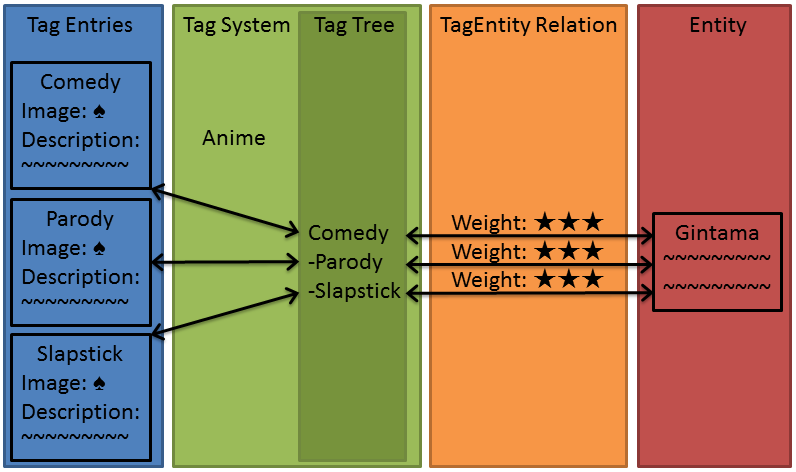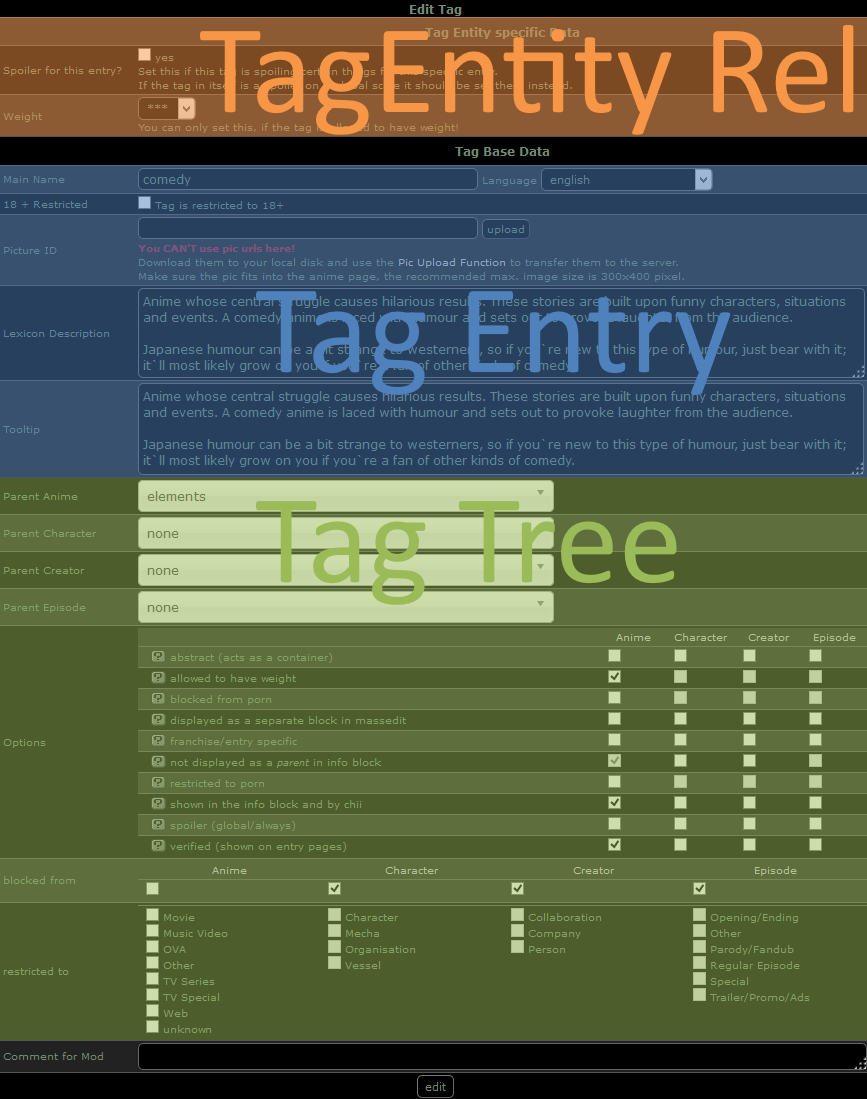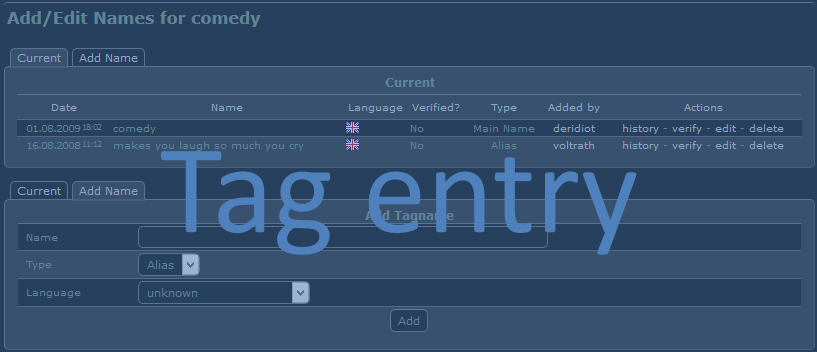User:Dvdkhl/TagSystem Internal: Difference between revisions
m (→What you see) |
m (Dvdkhl moved page User:Dvdkhl/TagSystem to User:Dvdkhl/TagSystem Internal) |
(No difference)
| |
Revision as of 20:43, 5 October 2014
Structure
Internal
To explain the structure, four keywords are necessary to be introduced: Tag System, Tag Tree, Tag Entry and Tag-Entity Relation.
The whole tagging structure is divided into four sub systems (Anime, Character, Episodes, Creator) i.e. Tag Systems.
Each Tag System has its own Tag Tree which are unrelated to each other.
A Tag Tree consists of hierarchical ordering of Tag Entries (with attached properties) which are common to all Tag Systems (but each Tag Entry may only be used once per Tag System).
A Tag Entry consists of a name (and aliases if necessary), an image, a description and whether it should be restricted (mostly because of the image).
A Tag-Entity Relation connects a Tag Entry to an Entity (i.e. Anime, Character, Episode or Creator) with additional information (e.g. Weight, IsSpoiler, etc)
To hit the structure home here is an example:
Lets say all tags were gone and we want to tag Gintama with Comedy, Slapstick, Parody.
First we need Tag Entries, one for each Keyword (Comedy, Slapstick, Parody), after we're done creating those (adding a name/aliases, image, description, etc.), we end up with the Tag Entries which we will now just refer to as [Comedy], [Slapstick], [Parody].
Clever as we are, we notice that there is a relationship between those Tag Entries, so we want to set [Comedy] as the parent of [Slapstick] and [Parody].
To do this, we go to the Anime Tag System (since Gintama is an anime) and manipulate its Tag Tree, i.e. set the parent of [Slapstick], [Parody] (within the Anime Tag System!) to [Comedy].
Now all that is left to do is to connect each of the Tag Entries to Gintama which is done through a Tag-Entity Relation.
What you see
Tag Add/Edit Page
Tag Names Add/Edit Page
TagEntity Add/Edit Page
Tag Entry
Naming Rules
To ensure tag-naming consistency, please abide by these rules:
- Tag names are basically all lower case, just like they would be used in sentences with British English spelling, e.g.
- anything can be awesome, creepy Gothic architecture.
- Reminder: Countries / languages start with a capital 1st letter, i.e.
- Spain, French, Japanese.
- Abbreviations are kept all upper case, e.g.
- SMS, CG, OP, ED, 3D.
- Full sentences begin in upper case, just like any sentence would.
- Names as in movies or book titles use Book Title Capitalization, e.g.
- Blade Runner, Do Androids Dream of Electric Sheep?
- Japanese words are spelled all lower case, e.g.
- sakura, henshin, onii-chan.
Avoid:
- character names, voice actors, directors, fannames, etc.
- all upper-case tag names, e.g.
- FOOBAR -> foobar
- avoid excessive use of ! or ?, e.g.
- foobar!!! -> foobar!
Note Please try to be objective when creating tag names, e.g. "this show is crap" will certainly not help and be deleted.
Examples: great OP song, Japanese mythology, tsundere, engaged to an alien, Weekly Shounen Jump
Aliases
Descriptions
When adding a new tag name, please add a description text as well. This helps all the users out there understand why you defined the tag, and will make your tags all the more valuable and useful:
- Use British English (no fancy casing)!
- Try to describe the intent / meaning of your tag as clearly as possible.
- Use complete sentences, e.g. "Japanese for transformation (metamorphosis or disguise)."
- Please do not simply copy the tag name into the description field. This is redundant spam.
If you happen to see a tag without a description, feel free to add your own. Help make the anime tags more descriptive!
Note Tag maintainers are much more likely to delete an obscure tag that does not have a description.


